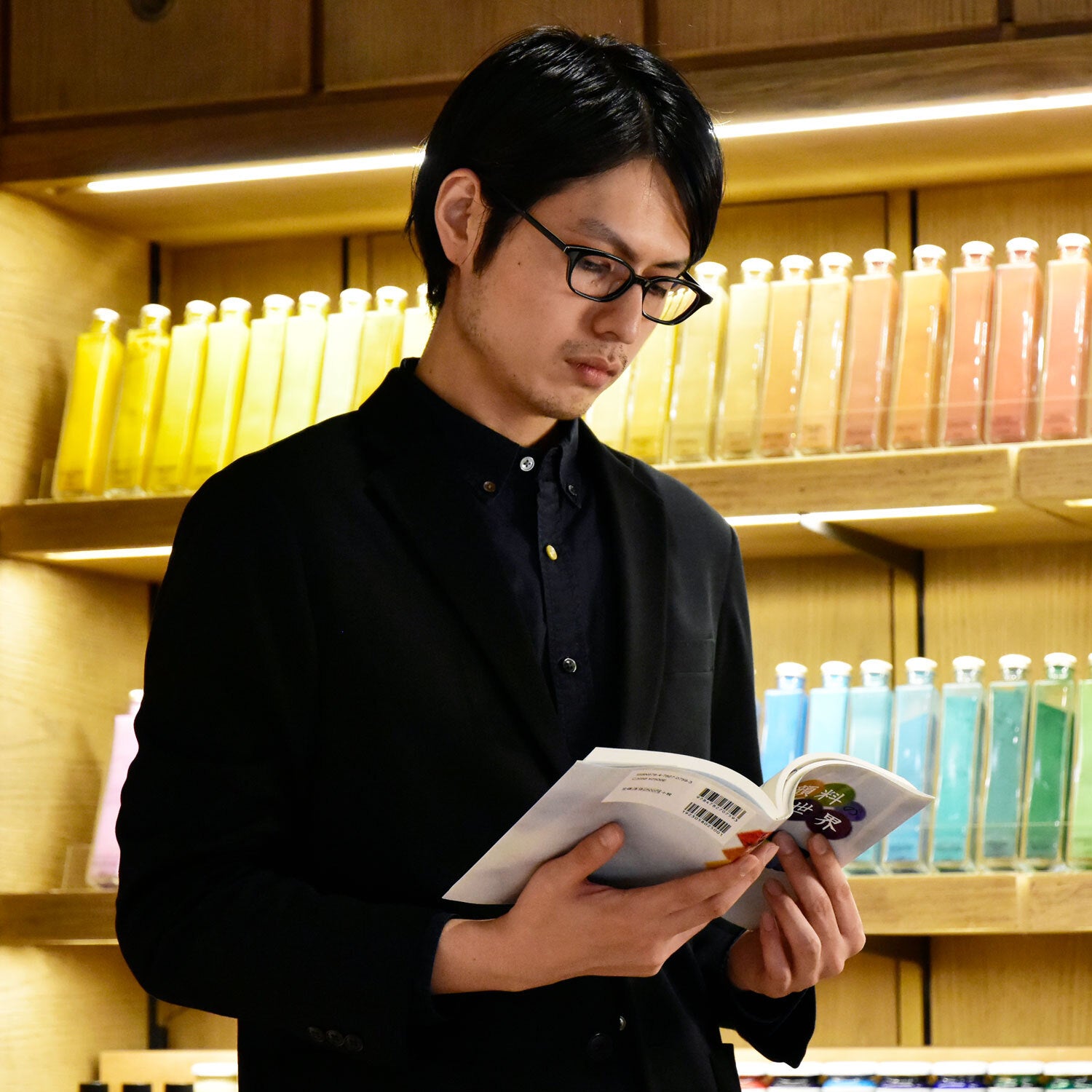**********
PIGMENT TOKYO handles many kinds of products as original glue and exhibition.
Koei Kasei Co., Ltd., which manufactures gelatin and collagen peptide in Himeji City, Hyogo Prefecture, has undergone the production of these products.
In the previous "Pigment TOKYO Original Convolvement, Collagen Gelatin Industry-", we asked Mr. Takashi Fukushima, President and CEO of the company, about the overview of the glue, the situation surrounding it, and the glue of Hiroei. 。
In the second part, under the guidance of Mr. Hiroyuki Shimizu, Managing Director of the company, we observed the process of actually creating the original Japanese Japanese.
Gelatin and glue as food and industrial products are manufactured in the following processes:

This time, we created two types of cow -dried skin and fish (sea bream) skin.
The cow skin is finely chopped the dried state, then returned it with water and then cooked.
Originally, it was extracted several times, and several types of jelly strength were cooked together, but only the primary extraction was performed.
The number of extraction varies depending on the type of glue, but once a kettle is put in a kettle, it takes a 24 -hour extraction, which takes a lot of time.

The right is the cow skin and the left is similar to the sea bream skin
It will take hours from here to boil the glue.
Like cooking, when you cook these things, lye and oil will float, so you will carefully expose this with a marine.

Looking at this photo alone, it looks like you're cooking.
It smelled like a soup.
The concentration of the glue is measured regularly with the concentration of the concentration while managing it to a constant temperature.
Unlike edible gelatin and collagen peptide made in large lots, the original Japanese glue needs to work by craftsmen. For example, this time it took 8 hours from ignition just by primary extraction.

At 7:30, the fish was ignited at 10:30 and the fire began.
Here is the state of the primary extraction. It looks like dashi. Move this to another place, and then do filtration work after cooling to human skin.


Glue extraction
Here is the work of filtering with a filter.
Pulp filters are laid on the porcelain funnel, which allows impurities to be filtered in vacuum.
Peaves are filtered in the same way.

The glass below is equipped with a device that makes the inside of the container vacuum. This makes filtration efficiently
Once the rough heat is removed, pour the solution into the storage container and cool it down.

At the time of actual product manufacturing, it is cut after cooling, and drying is performed in one room in the factory using a dedicated wire mesh.

Blood in drying with Kosuei
After this, work to measure strength and ingredients is performed.
The left photo below is a machine that measures the jelly strength used in Hiroei.
It cools the dissolved one with the glue dissolved in a dedicated bottle, and measures how much power to push back a jelly state with a plastic stick. The right photo is a bottle for inspection.

Bottle standards are also strictly determined by JIS (Japanese Industrial Standards).
The following photos are devices that measure glue viscosity.
The required viscosity is different for edible and industrial use, so the measurement method changes.

It has a mechanism that can handle both food and industrial use on the left and right.
Since the original Japanese -style material uses various raw materials according to the time, it does not make the concept of a constant value like a large lot product.
Therefore, the "9. mixing" process is performed, but the final inspection is performed and shipped.
As described above, this glue is completed through a long process.
In addition, it has a sample and prototypes of raw materials that could not be introduced to the facility of Kosenkari, and it was an interview that was not the current main product, but you could feel the extraordinary commitment with your skin. Ta.
After the interview, we brought back the raw material of the cow skin, which had been extracted, and performed secondary extraction and tertiary extraction in the Pigment Tokyo lab space.
First, we will cut the solid -shaped glue with a storage container.
Similar when drying work with Kosenchi, the jelly -shaped metal was placed on a jelly -shaped metal and dried at room temperature.

Appearance of drying urine
As a process, as well as the work performed in Kosenki, put the raw materials and water that have been extracted in the pan and boil them until the concentration is suitable for bonding. This time, the secondary extraction was about 7 hours and the third extraction was performed for about 7 hours.
(Originally, boil down until the concentration is appropriate using a concentration.)
After that, after performing a simple filtration work, the liquid was poured into the mold, cut into thinly separated with the same process, and dried.

Substitute with a mold for Japanese sweets

It seems that the glue is drying. In the foreground is a secondary extraction cow, and the back is Iizuku
Although it was a simple task that did not measure or extracted the product level, it was possible to create a glue that was comparable to what was done in Kosenken.

The glue of primary extraction, secondary extraction, and tertiary extraction. You can see that there is a difference in transparency
Pigment Tokyo continues to accumulate and promote knowledge of expression techniques cultivated by craftsmen and writers for a long time.
The glue has the potential other than Japanese painting, mixing with other water -based mediums.
Please explore the potential of expression beyond the fields with high -quality domestic products.
[Corporate information]
Koei Kasei Co., Ltd.
〒671-1262 Yogami-shi, Himeji City 33
TEL: 079-273-2001
FAX: 079-273-2010
home page:https://www.koei-chem.com/index.html
*The company's glue is a Pigment Tokyo -only product.
Please purchase from Pigment Tokyo stores and online shops.
https://pigment.tokyo/


